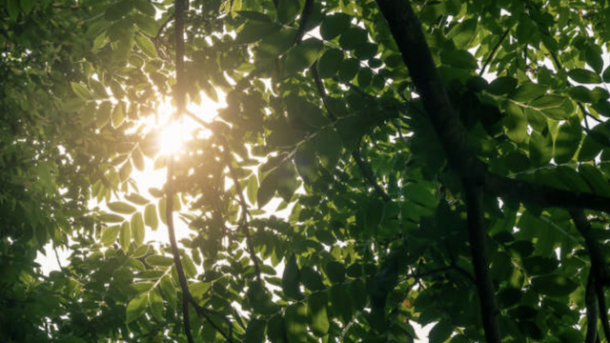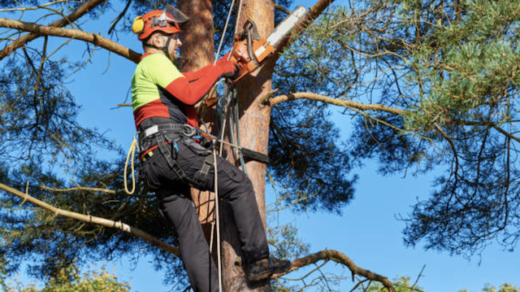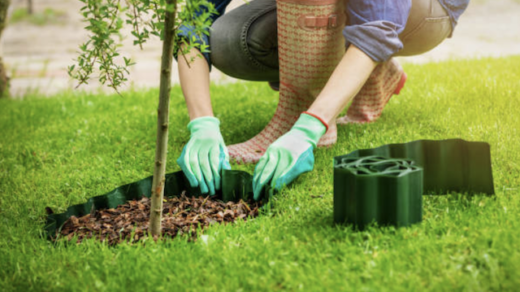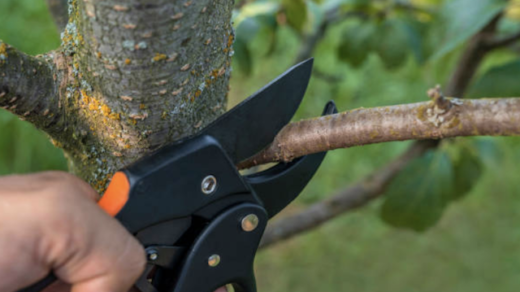Having shade trees in your yard has many wonderful benefits. Underneath a large shade tree is the perfect location for a backyard BBQ or for kids to spend time outside. It will also keep your home cooler when temperatures rise.
To get the full benefit of shade trees, you need to plant the right species and care for them correctly.
CT Tree Trimming has recommendations for the best trees to plant for shade, as well as some expert advice on caring for your shade trees so they continue to grow healthy and strong.
Planting Trees for Shade
All trees can provide shade, but there are some species that are built for the best shade. These types of trees often have a thick, wide canopy that reaches out about as far as it does upward.
In the following paragraphs, we’ve provided some examples of shade trees based on whether they would be best suited for your front or back yard.
Back Yard Shade Trees
Shade trees in the back yard are typically for your own benefit. Next-door neighbors and passersby usually won’t see these trees , so they can be planted purely for shade and enjoyment.
In addition to shade, these trees can provide year-round color as well as some additional privacy.
Here are popular options:
- Magnolia
- Sugar maple or silver maple
- Weeping willow
- Weeping cherry
- Red oak
If you have a large enough space, a live oak is a beautiful choice. Live oaks are said to be the fastest growing shade trees, and are able to get very large. An older live oak is able to grow up to 80 feet tall and up to 100 feet wide.
Many of these back yard tree suggestions get extremely large, so you need to do a little research to find out if the tree will have enough space to grow to its full potential.
If there is not enough room, the tree’s root system can destroy your fencing or even your home. You will also have to prune the tree every year to keep it from being overgrown. A tree that grows too large for its location will most likely have to be removed, which is an inconvenient and sometimes costly situation.
Front Yard Shade Trees
In the front yard, you are planting trees for your enjoyment as well, but these trees will be a lot more impactful for adding curb appeal and value to your home than the back yard trees.
Choose shade trees for the front yard that are a little smaller so they don’t overshadow your home and landscaping. These trees should pair with your landscaping in both size and color, while still creating lots of shade for front yard relaxation and play.
These are some of the shade trees CT Tree Trimming recommends:
Red maple
River birch
Dogwood
White oak
Ginkgo tree
These trees are colorful throughout the year, and they’ll exude even more color during the fall.
Another good option for your front or side yard is the ‘Green Giant’ Arborvitae. This hedge-like tree can be planted in a long row with others to provide privacy as well as shade.
With these suggestions in mind, we encourage you to plant trees you like. In all honesty, any type of tree can grow to become a “shade tree.” As long as the trees you choose are suitable for the weather in Connecticut, they will provide your yard and home with shade.
Benefits of Planting Shade Trees
The reasons to have shade n your yard are numerous — there are some that you likely don’t typically think about.
Shade, Obviously – When temperatures soar, you don’t need to run indoors if you have a comfortable, shady yard. Place a chair or hammock below your biggest shade tree and relax outside as long as you like.
Climate Control – Trees can regulate the temperature in your yard and inside your house. Not only do trees protect you from the glaring sun, but they can make it feel 10-15 degrees colder underneath their protective canopies. This translates to less solar radiation on your roof and siding as well, which should also result in lower energy costs!
Better Air Quality – Trees produce oxygen and remove pollutants, so there is healthier air around your house. Arbor Day Foundation research states that one mature tree absorbs around 48 pounds of CO2 from the air.
Safety for Animals – If you’re into bird watching or think squirrels and chipmunks are adorable, your trees can give them all they will need to build a shelter, find nearby food and raise babies.
Fun – What kid doesn’t want a backyard tire swing or tree house? If you have children, shade trees can provide hours of fun and joyful memories.
How to Care for Shade Trees
Caring for shade trees is simple as long as you’ve chosen the right species for the weather in Connecticut. Healthy trees are strong and durable after a couple of years, needing little attention or care.
Consult an arborist from CT Tree Trimming if you have any questions about the care of your shade trees, or to help you select the best tree for your yard.
Once you have determined the perfect shade tree(s), follow this simple care guide until your shade tree is well established.
Planting Your Shade Tree
The south, west and east of your property get the most sun, so plant your new trees on one of these areas of your yard. This is two-fold: 1) the trees will then provide the most amount of shade and 2) they will also receive the most amount of sun to grow healthy.
Trimming Your Shade Tree
Prune during the first year or two after planting the tree in order to shape it and help it develop a strong foundation. To be safe, and for the best results, call CT Tree Trimming for tree trimming in Connecticut. A certified arborist will arrive at your home and deliver professional care for the tree.
Watering Your Shade Tree
Watering a new tree is very important. This helps them form a deep root system and will give the tree more stability over the course of its lifetime.
Fertilizing Your Shade Tree
Homeowners should fertilize a shade tree the same way you would any other tree in order to support growth. Fertilizer is not necessary, but it can assist in helping your tree to grow faster and produce more leaves, which are the source of your shade.
We hope this blog post was helpful! Remember, when it is time to trim or prune a new shade tree, CT Tree Trimming can help! Call and a certified arborist in Connecticut will visit your property, assess the tree and determine the best maintenance plan for its long-term health and growth.





